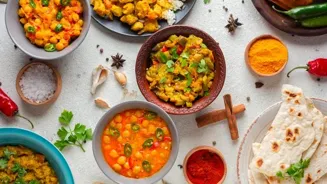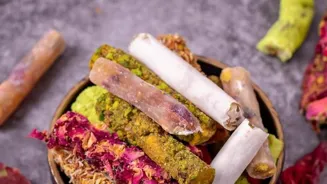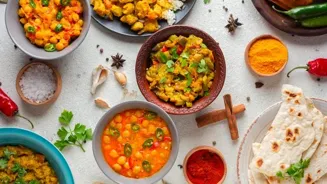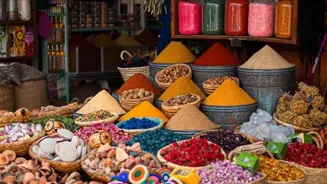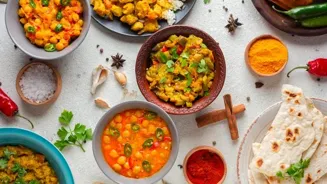Dive into the Vibrant World of Indian Cuisine, from North to South. Discover the flavors that define each region. Explore now!
India, a land of vibrant cultures and traditions, boasts a culinary landscape
as diverse and colourful as its people. From the snow-capped Himalayas to the sun-kissed beaches of the south, each region offers a unique tapestry of flavours, ingredients, and cooking techniques.
Embark on a delectable journey as we explore the vegetarian delights that make Indian cuisine a global phenomenon.
Culinary journey through Northern Indian flavors and Mughal influences
Our culinary adventure begins in the northern states, where the influence of the Mughal era is evident in the rich and aromatic vegetarian dishes. Imagine sinking your teeth into a creamy paneer butter masala, its velvety texture and tangy tomato-based gravy a symphony of flavours.
Picture yourself savouring dal makhani, a slow-cooked lentil dish simmered overnight for a smoky depth and unparalleled richness. And who can resist the allure of chole bhature, a spicy chickpea curry served with fluffy, deep-fried bread, a true indulgence for the senses?
The use of generous amounts of ghee, cream, and dried fruits gives these dishes a royal touch, perfect for celebratory occasions or a special family meal.
Don't forget the array of breads, from tandoori roti to naan, each offering a distinct texture and flavour that complements the curries perfectly. Northern Indian cuisine is a feast for the senses, a testament to the region's rich history and culinary heritage.
Bengali cuisine celebrates freshness and simplicity with unique flavors
Moving eastward, we encounter the subtle yet distinct flavours of Bengali cuisine. Here, the focus shifts to fresh vegetables, lentils, and the clever use of spices to create light and flavourful dishes.
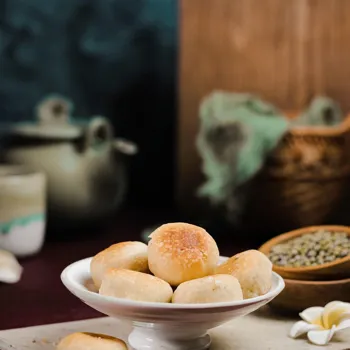
Aloo posto, potatoes cooked in a poppy seed paste, is a classic example of Bengali ingenuity, transforming simple ingredients into a culinary masterpiece.
Shukto, a mixed vegetable medley with a slightly bitter taste, is believed to have medicinal properties and is often consumed during the summer months.
The desserts are equally captivating, with rasgulla, soft cheese balls soaked in a sugary syrup, and sandesh, a sweet made from paneer, being quintessential Bengali treats. The use of mustard oil is prevalent in many dishes, lending a pungent aroma and a distinctive flavour profile.
Bengali cuisine is a celebration of simplicity and freshness, a true reflection of the region's agrarian roots.
Exploring Gujarati cuisine: veggie-centric dishes, sweet-sour-spicy flavors, iconic Dhokla and Thali
Venturing westward, we arrive in Gujarat, where vegetarianism is deeply ingrained in the culture. Gujarati cuisine is characterized by its sweet, sour, and spicy flavour combinations, creating a symphony of tastes that is both unique and satisfying.

Dhokla, a steamed chickpea flour cake, is a popular snack, often served with a tangy chutney. Undhiyu, a mixed vegetable casserole cooked upside down in earthen pots, is a winter specialty, showcasing the resourcefulness of Gujarati cooks.
And then there's the Gujarati thali, a complete meal served on a single platter, comprising an assortment of dal, rice, vegetables, roti, and sweets, offering a glimpse into the diverse flavours of the region.
The use of jaggery and lemon juice is common, adding a touch of sweetness and tanginess to the dishes. Gujarati cuisine is a testament to the region's vibrant culture and its unwavering commitment to vegetarianism.
Madhya Pradesh cuisine: rustic, wholesome vegetarian dishes with local ingredients and millets
In the heart of India, Madhya Pradesh offers a simpler, more rustic take on vegetarian cuisine. The food here is characterized by its use of locally sourced ingredients and its emphasis on wholesome flavours.
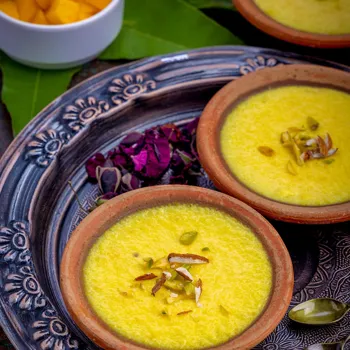
Bafla, a baked wheat cake similar to bati in Rajasthan, is a staple food, often served with dal and chutney. Poha, flattened rice cooked with onions, spices, and peanuts, is a popular breakfast item, providing a quick and nutritious start to the day.
Bhutte ki kees, grated corn cooked with milk and spices, is a unique delicacy, showcasing the versatility of this humble grain. The cuisine of Madhya Pradesh is a reflection of the region's agricultural heritage and its commitment to simplicity and sustainability.
The use of millets is also common, adding a healthy and nutritious element to the dishes.
South Indian cuisine: diverse, flavorful, rich in spices and creativity
Our journey culminates in the southern states, where rice is the staple and vegetarian cuisine reaches new heights of creativity and flavour. From the spicy sambar and rasam of Tamil Nadu to the coconut-infused curries of Kerala, South Indian cuisine is a kaleidoscope of tastes and textures.
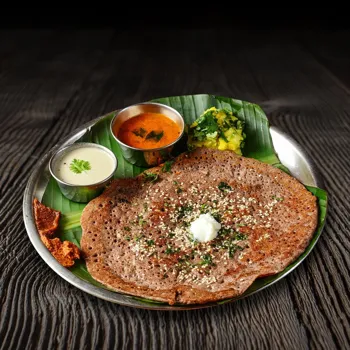
Idli and dosa, fermented rice and lentil pancakes and crepes respectively, are iconic breakfast dishes, enjoyed across the country. Uttapam, a thicker version of dosa topped with vegetables, and vada, a savory lentil doughnut, are also popular choices.
The use of curry leaves, mustard seeds, and coconut is prevalent, lending a distinctive aroma and flavour to the dishes. South Indian cuisine is a testament to the region's rich agricultural heritage and its mastery of spice blending.
Discover the diverse and delicious vegetarian cuisine of India
From the creamy curries of the north to the subtle flavors of the east, the sweet and tangy dishes of the west to the rustic simplicity of central India, and culminating in the spicy and aromatic cuisine of the south, India offers a vegetarian culinary experience unlike any other.
Each region's unique ingredients, cooking techniques, and cultural influences combine to create a diverse and delicious tapestry of flavours that is sure to tantalize your taste buds and leave you craving more.
So, embark on this culinary journey and discover the magic of Indian vegetarian cuisine for yourself. It's an experience you won't soon forget!
